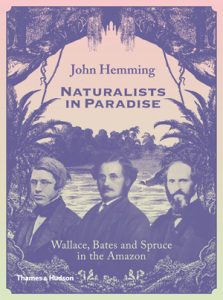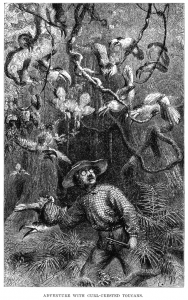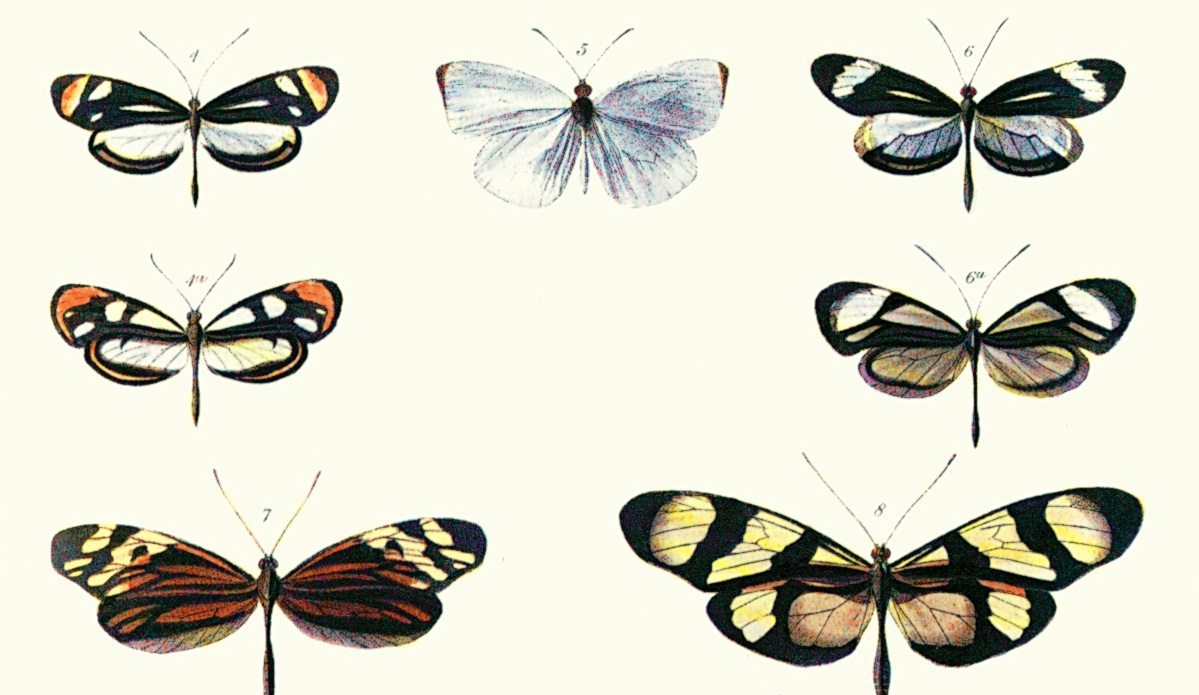Thames & Hudson has released new books on history for this holiday season, including Naturalists in Paradise, which chronicles the adventures and discoveries of three young English scientists–Alfred Russel Wallace, Henry Walter Bates, and Richard Spruce–in mid-19th-century South America.
From Amazon expert and former director of the Royal Geographical Society John Hemming, this huge and detailed account of the years spent by these explorers in Amazonia sheds a very interesting light on some of the best features of the young explorers (an inspiration for all young scientists today).
Some of their major assets were:
- a keen curiosity towards nature; they would watch everything carefully, noting different species of birds, animals, and plants throughout their journey.
- an ability to explore, collect, sketch, and sell their specimens; which was fundamental to keep the expenses of their travels in check.
- an open mind towards the difficult situation of slavery and racial differences in 19th century Brazil; since dealing with the local population, and respecting their cultural differences, was fundamental for the success of their exploring journey.
 Alfred Russel Wallace became one of the greatest British naturalists. He is best known for independently conceiving the theory of evolution through natural selection; his paper on the subject was jointly published with some of Charles Darwin’s writings in 1858 and was the last push Darwin needed to publish his own ideas in On the Origin of Species.
Alfred Russel Wallace became one of the greatest British naturalists. He is best known for independently conceiving the theory of evolution through natural selection; his paper on the subject was jointly published with some of Charles Darwin’s writings in 1858 and was the last push Darwin needed to publish his own ideas in On the Origin of Species.
Henry Walter Bates was one of a group of outstanding naturalist-explorers who supported the theory of evolution by natural selection, and was in his twenties when he joined Wallace in this expedition. He is best known for his theory of protective mimicry among insects (a.k.a. Batsean mimicry).
Richard Spruce was a botanist with remarkable abilities. In 1834, aged 16, he drew up a neatly written list of all the plants he had found around Ganthorpe, England. Arranged alphabetically and containing 403 species, the gathering and naming must certainly have taken him several years.
In 1847, Wallace and Bates discussed the idea of an expedition to the Amazon Rainforest, the plan being to cover expenses by sending specimens back to London. An agent there would sell them for a commission. The main purpose was for the travelers to “gather facts towards solving the problem of the origin of species.” They sailed from Liverpool in April 1848, arriving in Pará (now Belém) at the end of May. For the first year, they settled in a villa near the city, collecting birds and insects. After that they agreed to collect independently, Wallace preferring to explore up-river with his brother.
Bates traveled to Cametá, on the Tocantins River. He then moved up the Amazon, to Bidos, Manaus and finally to the Upper Amazon. Tefé was his base-camp for four and a half years. His health eventually deteriorated and he returned to Britain, sending his collection by three different ships to avoid the fate suffered by Wallace’s collection, which was lost at sea. He spent the next three years writing his account of the trip: The Naturalist on the River Amazons, one of the finest reports of natural history travels.
As for Spruce, his early interest in botany led to his being sent on a collecting trip in the Pyrenees in 1845, before joining Wallace and Bates in 1849. Once in the Amazon Basin, he collected more than 30,000 plant specimens and continued his way up to the Andes during the next 14 years. After returning to England, he wrote The Hepaticae of the Amazon and the Andes of Peru and Ecuador.
 The book follows the recollections of these naturalists during their stay in the Amazon Basin, and explores deeply how it was that they traveled and worked once they were settled. With no motor vehicles and scarce roads, most of their collecting and traveling was done on foot or by traveling the rivers in canoes.
The book follows the recollections of these naturalists during their stay in the Amazon Basin, and explores deeply how it was that they traveled and worked once they were settled. With no motor vehicles and scarce roads, most of their collecting and traveling was done on foot or by traveling the rivers in canoes.
The details of their experiences–people they met, the suffering they experienced with mosquito bites and bats… being lost in the forest… and, above all, the beauty of everything they encountered–is something certainly of interest to any aspiring scientists. All the difficulties they faced and the findings they brought to the world are an incredible feat. For instance, Wallace discovered that he could read the newspaper by moving a firefly along the lines; he was in a boat, traveling up the river at night, with no available source of light except candles. The fact that you may be reading this piece about him on a self-illuminating surface is nothing short of poetic, and it shows the great difference between their time of exploration and ours.
Disclosure: I was given a copy of this book for review purposes.
Featured image by Henry Walter Bates

